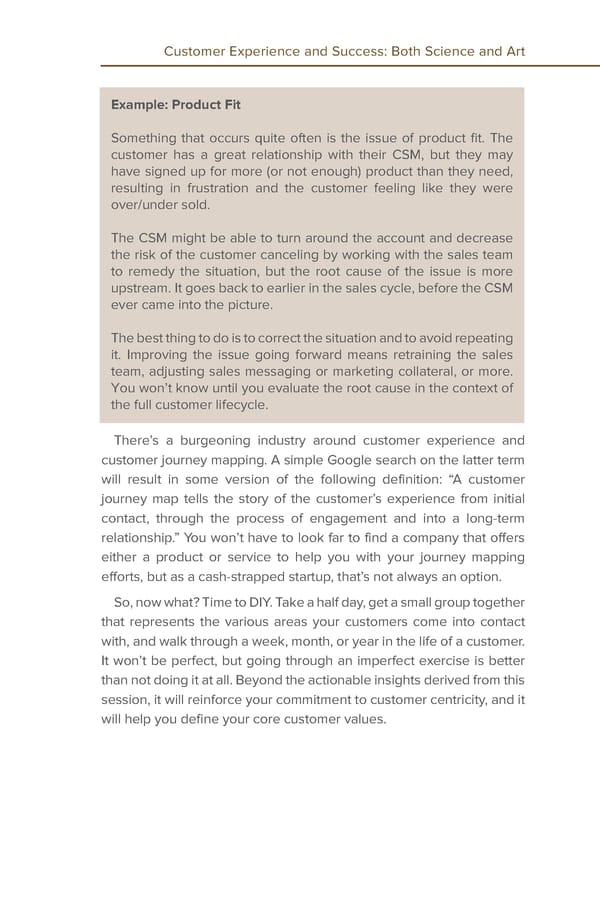Chapter 8 Customer Experience and Success: Both Science and Art Example: Product Fit Something that occurs quite often is the issue of product fit. The customer has a great relationship with their CSM, but they may have signed up for more (or not enough) product than they need, resulting in frustration and the customer feeling like they were over/under sold. The CSM might be able to turn around the account and decrease the risk of the customer canceling by working with the sales team to remedy the situation, but the root cause of the issue is more upstream. It goes back to earlier in the sales cycle, before the CSM ever came into the picture. The best thing to do is to correct the situation and to avoid repeating it. Improving the issue going forward means retraining the sales team, adjusting sales messaging or marketing collateral, or more. You won’t know until you evaluate the root cause in the context of the full customer lifecycle. There’s a burgeoning industry around customer experience and customer journey mapping. A simple Google search on the latter term will result in some version of the following definition: “A customer journey map tells the story of the customer’s experience from initial contact, through the process of engagement and into a long-term relationship.” You won’t have to look far to find a company that offers either a product or service to help you with your journey mapping efforts, but as a cash-strapped startup, that’s not always an option. So, now what? Time to DIY. Take a half day, get a small group together that represents the various areas your customers come into contact with, and walk through a week, month, or year in the life of a customer. It won’t be perfect, but going through an imperfect exercise is better than not doing it at all. Beyond the actionable insights derived from this session, it will reinforce your commitment to customer centricity, and it will help you define your core customer values.
 Customer Experience and Success Page 8 Page 10
Customer Experience and Success Page 8 Page 10